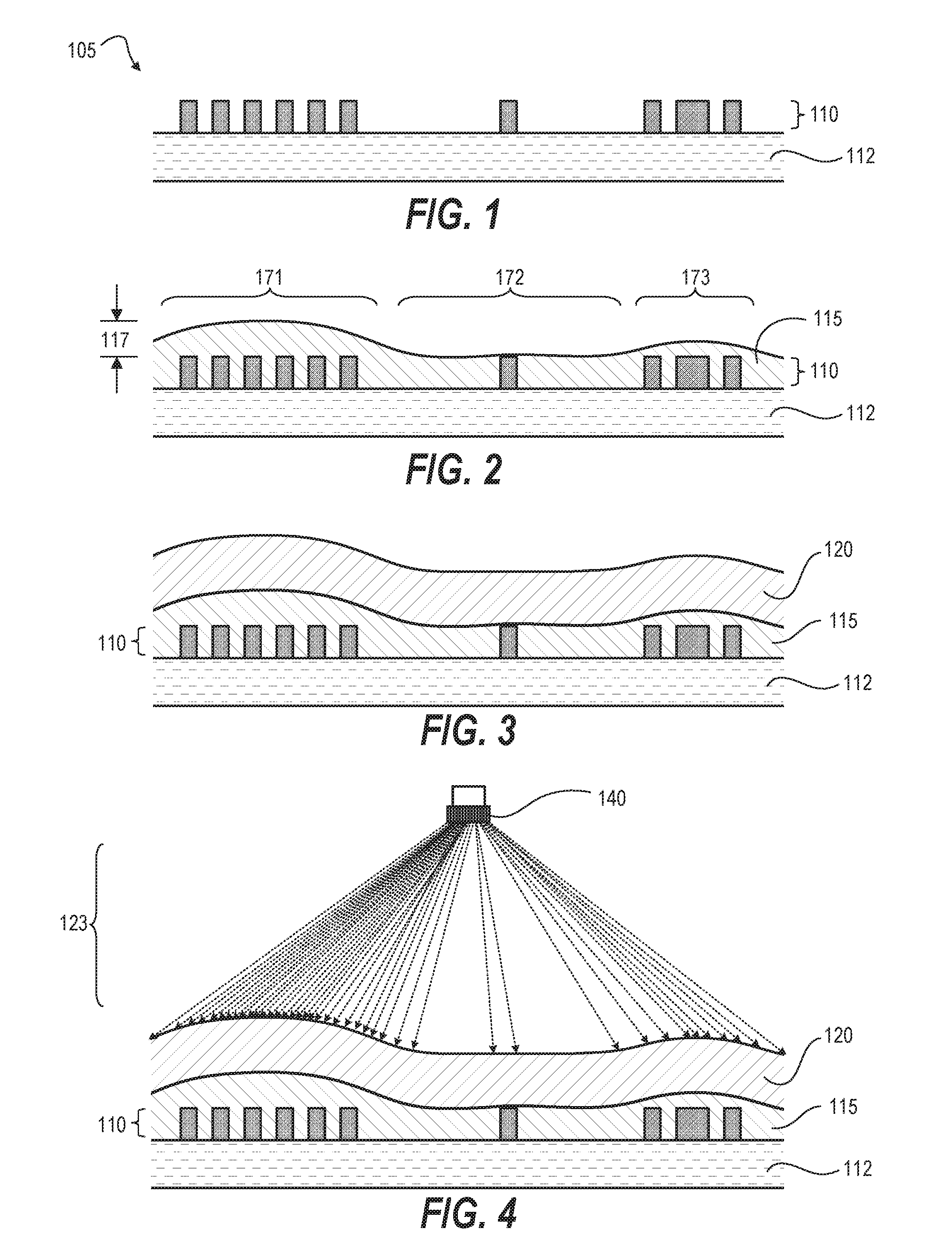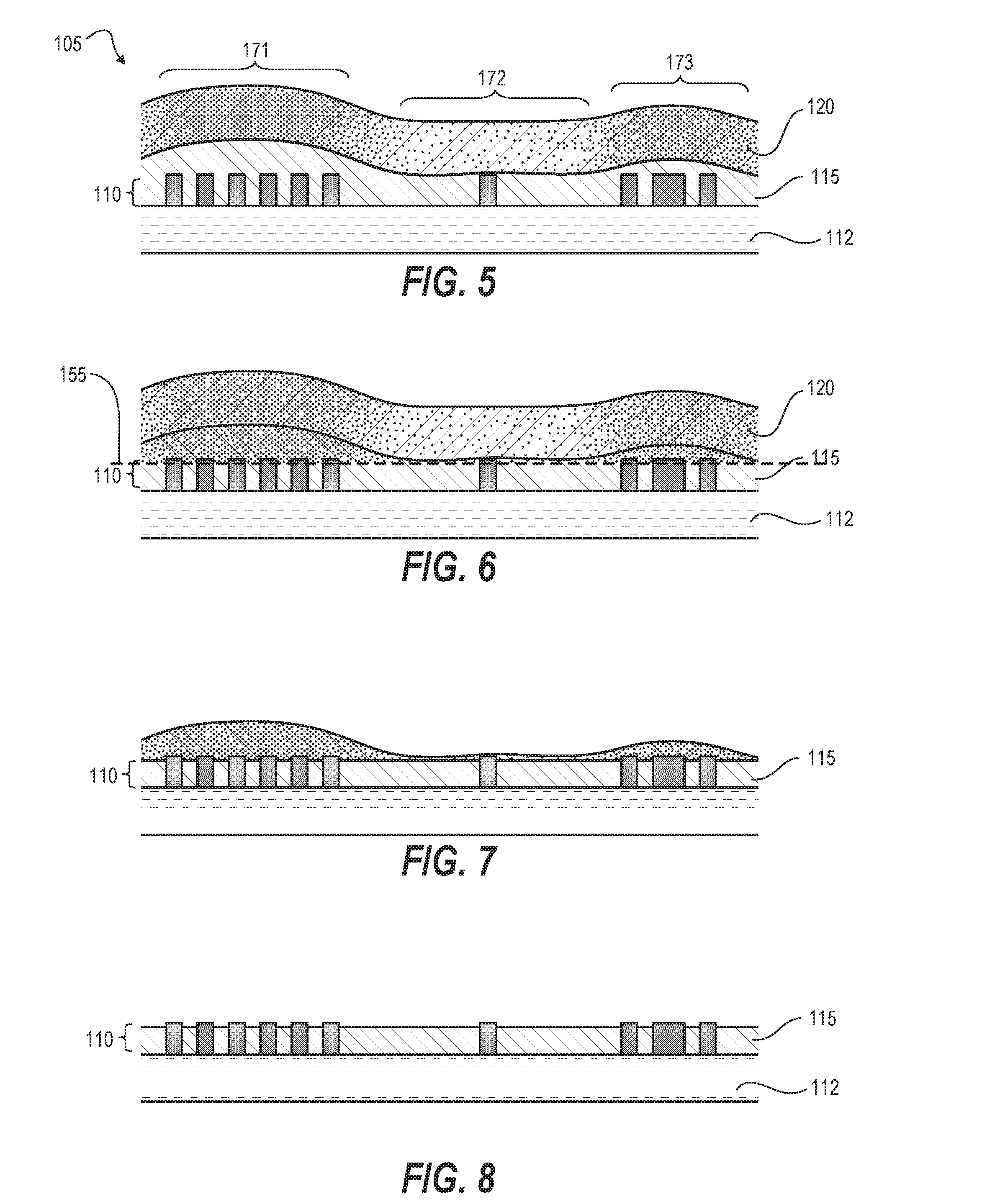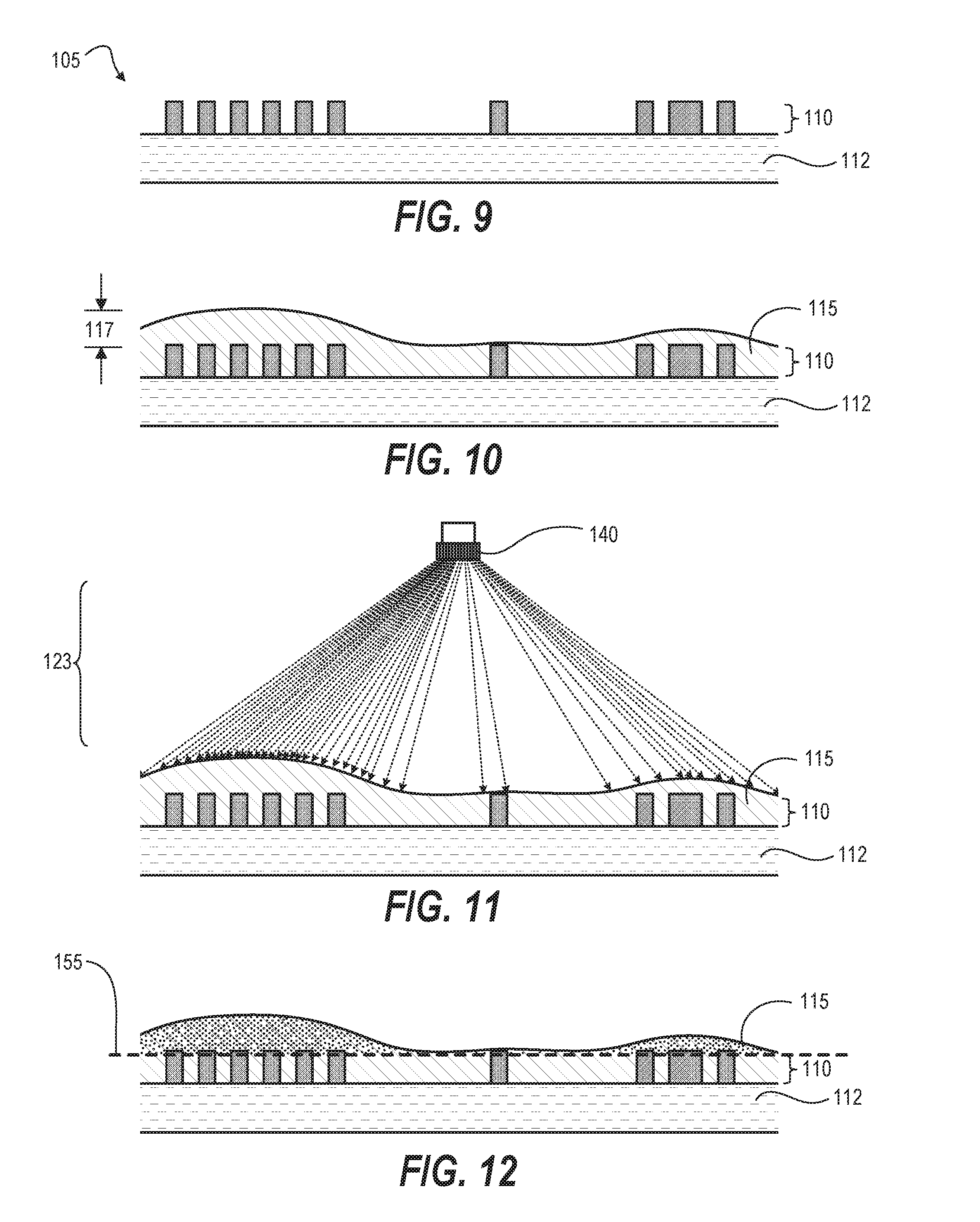System and Method for Planarizing a Substrate
a substrate and system technology, applied in the field of microfabrication, can solve the problems of inability to use cmp for many process steps of microfabricating an integrated circuit, limited use of cmp, and high physical abrasion resistance of cmp, so as to achieve high controllability and accuracy
- Summary
- Abstract
- Description
- Claims
- Application Information
AI Technical Summary
Benefits of technology
Problems solved by technology
Method used
Image
Examples
Embodiment Construction
[0027]Techniques disclosed herein provide a chemical-based planarization process without mechanical polishing. Techniques include providing selective or differential planarization such that different regions of a substrate can have different amounts of material removed. In general, methods herein use photo-reactive generator compounds to generate solubility-changing agents. A specific pattern of light is projected onto a substrate containing such photo-reactive generator compounds to create different concentrations of solubility-changing agent(s) at specific locations across a substrate. These concentration differences then control an amount (height or depth) of material removed from a given film or layer at each specific location.
[0028]There are several embodiments encompassed by techniques herein. FIGS. 1-8 illustrate one example embodiment for planarizing a substrate. Referring now to FIG. 1, a substrate 105 is received having micro-fabricated structures 110 formed thereon. Note ...
PUM
 Login to View More
Login to View More Abstract
Description
Claims
Application Information
 Login to View More
Login to View More - R&D
- Intellectual Property
- Life Sciences
- Materials
- Tech Scout
- Unparalleled Data Quality
- Higher Quality Content
- 60% Fewer Hallucinations
Browse by: Latest US Patents, China's latest patents, Technical Efficacy Thesaurus, Application Domain, Technology Topic, Popular Technical Reports.
© 2025 PatSnap. All rights reserved.Legal|Privacy policy|Modern Slavery Act Transparency Statement|Sitemap|About US| Contact US: help@patsnap.com



